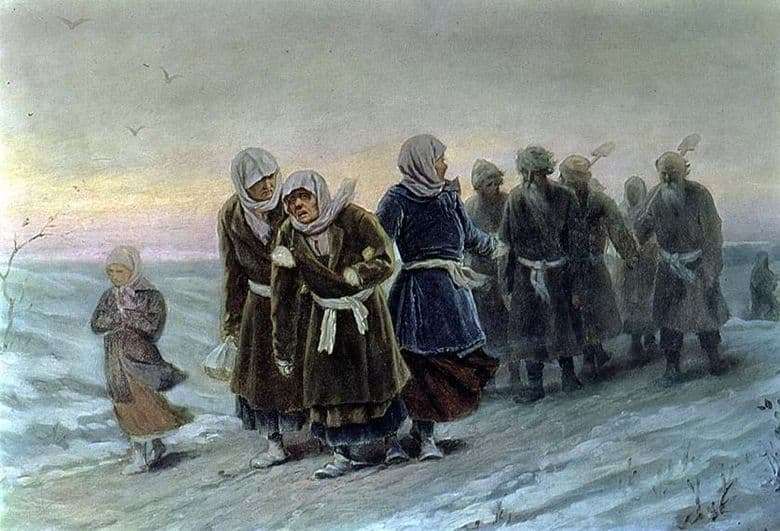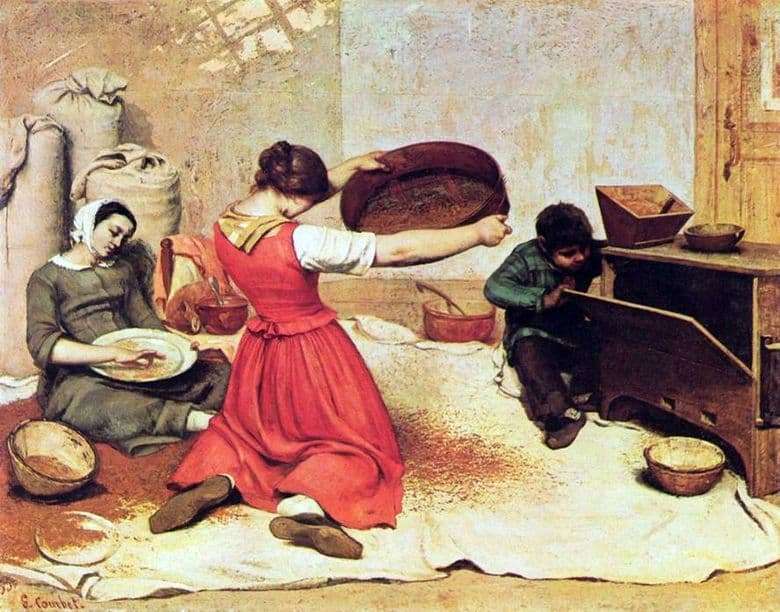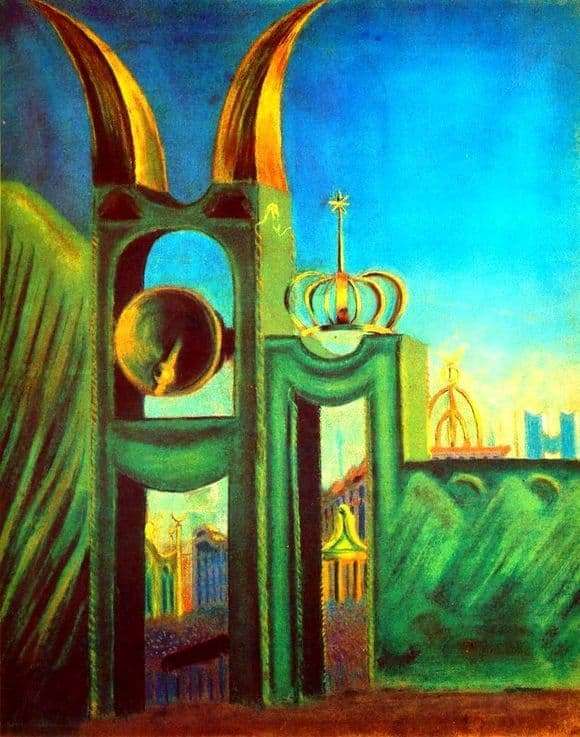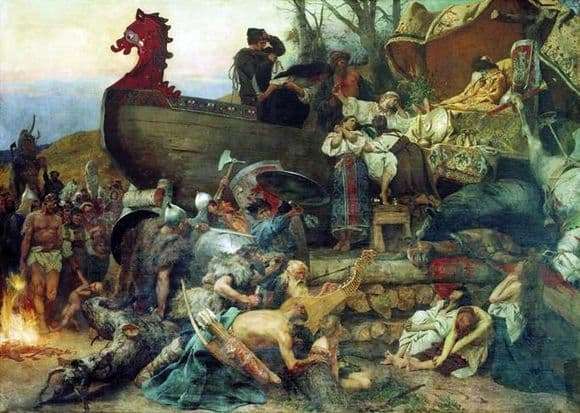
The work of Gustave Courbet is dedicated to his grandfather, after the funeral of which, the artist dawns on the idea of capturing this event on canvas. Many of those present were eager to be in the picture. So it happened. As the artist said afterwards, it was very difficult to place such a large number of people in his small workshop. The vicar, who conducted the ceremony, and the mayor of the city, who was present at the funeral, as well as the ordinary people who glorified the deceased posed for him. Many whom Courbet had forgotten to invite were offended by him, demanding their participation.
The grim atmosphere of the funeral is emphasized both by the grimaces on the faces of those present and the background of the sky. Many, unable to stand, hid their faces under handkerchiefs, while others performed the rite with serene faces. Given that most of Courbet’s works have darkened with time, it can be assumed that the action takes place in broad daylight. Also, this guess seems fair, given the white clouds in the right edge of the picture.
On the left, we can observe people in hats carrying a coffin. Their faces are lowered, which underlines the significance of the deceased in life. Sadness is noticeable and honorable guests. For example, the mayor is in his black cocked hat. He is near the burial pit and stretches his hand. Next to him is, apparently, a close relative of Courbet. Sitting on one knee, he waits for the coffin to be lowered.
Especially striking cross with a crucified man. At first, this is puzzling, because where does this phenomenon in the midst of French lands come from. And times, judging by the clothes of those present, are close to the 18th century. However, if you look better, it becomes clear that this is a cross with a crucifix, which is held in the hand of a church minister. Then everything falls into place.
Gustave Courbet’s painting The Funeral in Ornan







